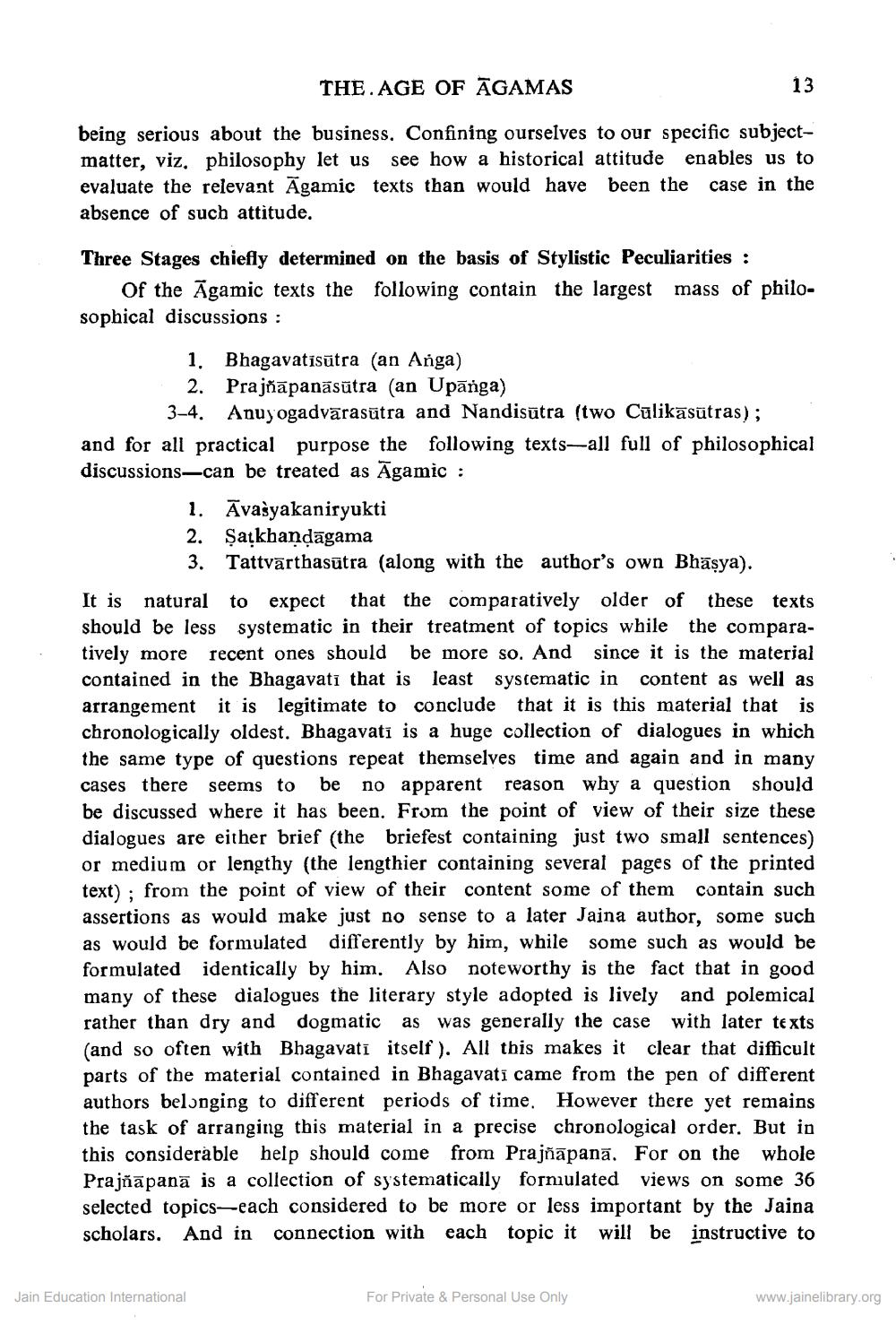________________
THE AGE OF ĀGAMAS
13
being serious about the business. Confining ourselves to our specific subjectmatter, viz. philosophy let us see how a historical attitude enables us to evaluate the relevant Agamic texts than would have been the case in the absence of such attitude.
Three Stages chiefly determined on the basis of Stylistic Peculiarities :
Of the Āgamic texts the following contain the largest mass of philosophical discussions :
1. Bhagavatisūtra (an Anga) | 2. Prajnapanasutra (an Upanga)
3-4. Anuyogadvārasūtra and Nandisātra (two Culikāsūtras); and for all practical purpose the following texts—all full of philosophical discussions-can be treated as Āgamic :
1. Āvasyakaniryukti 2. Satkhandāgama 3. Tattvārthasūtra (along with the author's own Bhāsya).
It is natural to expect that the comparatively older of these texts should be less systematic in their treatment of topics while the comparatively more recent ones should be more so. And since it is the material contained in the Bhagavati that is least systematic in content as well as arrangement it is legitimate to conclude that it is this material that is chronologically oldest. Bhagavati is a huge collection of dialogues in which the same type of questions repeat themselves time and again and in many cases there seems to be no apparent reason why a question should be discussed where it has been. From the point of view of their size these dialogues are either brief (the briefest containing just two small sentences) or medium or lengthy (the lengthier containing several pages of the printed text); from the point of view of their content some of them contain such assertions as would make just no sense to a later Jaina author, some such as would be formulated differently by him, while some such as would be formulated identically by him. Also noteworthy is the fact that in good many of these dialogues the literary style adopted is lively and polemical rather than dry and dogmatic as was generally the case with later texts (and so often with Bhagavati itself ). All this makes it clear that difficult parts of the material contained in Bhagavati came from the pen of different authors belonging to different periods of time. However there yet remains the task of arranging this material in a precise chronological order. But in this considerable help should come from Prajñāpanā. For on the whole Prajñāpanā is a collection of systematically forniulated views on some 36 selected topics—each considered to be more or less important by the Jaina scholars. And in connection with each topic it will be instructive to
Jain Education International
For Private & Personal Use Only
www.jainelibrary.org




